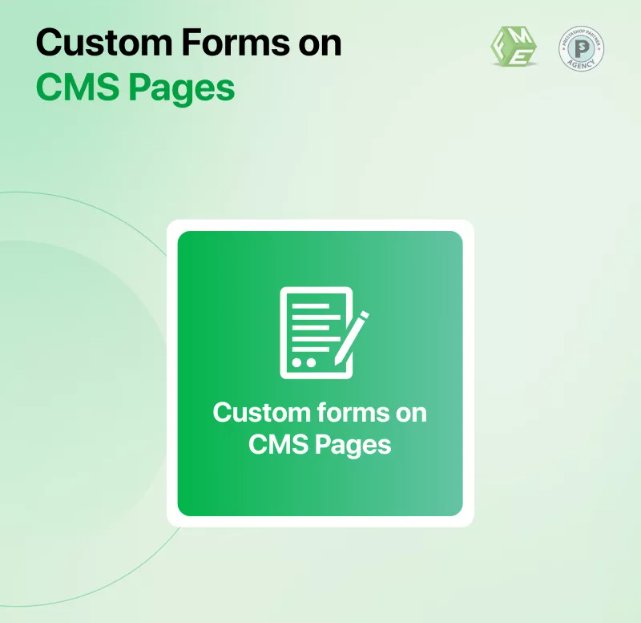PrestaShop CMS Forms in Action: Real-Life Scenarios to Enhance Your Online Store
PrestaShop CMS page forms boost customer engagement, streamline processes, and enhance sales by gathering key information like feedback, leads, and custom orders.

PrestaShop has become one of the leading e-commerce platforms, offering a vast array of tools and features designed to optimize the online shopping experience. Among its many capabilities, PrestaShop CMS (Content Management System) pages stand out as an essential tool for building an engaging and functional store. The ability to use forms in these pages, often referred to as the PrestaShop CMS page form, allows store owners to collect data, interact with customers, and streamline their business processes.
In this article, we’ll explore how PrestaShop CMS forms can be implemented in real-life scenarios to enhance your online store’s performance. From capturing leads to improving customer support, CMS forms can transform how you engage with customers and optimize the user experience.
The Power of PrestaShop CMS Forms
PrestaShop CMS forms are designed to be flexible and versatile, allowing store owners to create tailored forms to suit their unique business needs. These forms are integrated into PrestaShop's CMS pages, which are static web pages used to provide customers with information beyond product listings, such as "About Us" pages, privacy policies, or contact forms. By incorporating forms into these pages, businesses can seamlessly gather valuable information, such as customer inquiries, feedback, and even orders for customized products.
Real-Life Scenarios to Enhance Your Online Store
1. Customer Feedback Forms for Product Improvement
One of the most straightforward applications of a PrestaShop CMS page form is to collect customer feedback. As an online store owner, understanding customer satisfaction is critical to business growth. A well-designed feedback form can provide insights into what customers think about your products, services, and overall shopping experience.
For instance, after a customer makes a purchase, they might be prompted with a feedback form asking questions about their shopping experience, delivery time, or product quality. The data collected from these forms can then be analyzed to make improvements in your business. Research from Zendesk reveals that 67% of customers are willing to share their feedback if they feel it will help improve a product or service.
Cause-Effect Relationship: When you gather customer feedback via a PrestaShop CMS page form, you create an actionable loop. The more feedback you gather, the more informed your decisions become. This often leads to improvements in products or services, which can drive customer satisfaction and loyalty.
2. Lead Generation Forms for Building a Customer Base
Generating leads is essential for any e-commerce business. With PrestaShop CMS forms, you can create customized forms designed to collect potential customer information. A lead generation form can offer an incentive, like a discount or freebie, in exchange for a customer's email address.
For example, you can add a form to your site offering a 10% discount on the next purchase for new customers who sign up for your newsletter. This form could be placed on your homepage or a dedicated CMS page like a "Special Offers" page. By offering value upfront, you increase the chances of customers providing their details.
According to HubSpot, companies that excel at lead nurturing generate 50% more sales-ready leads at a 33% lower cost. The use of a PrestaShop CMS page form in this context has the power to boost your lead generation efforts significantly.
Cause-Effect Relationship: The more leads you generate through these forms, the more customers you can target with tailored marketing campaigns. This increases conversion rates and, ultimately, sales.
3. Contact Forms for Improved Customer Support
Customer service plays a critical role in retaining clients and building trust. A PrestaShop CMS page form can serve as an efficient contact form that allows customers to submit inquiries directly to your support team. This is particularly helpful if you run a large e-commerce business and need to manage multiple customer service requests.
When customers visit your "Contact Us" page, they should be able to quickly find a form that allows them to explain their issue or ask a question. The form should capture key details such as name, email, order number, and a description of the issue. The information gathered from the form can be automatically routed to your support team for quick follow-up.
Cause-Effect Relationship: Providing a simple, easy-to-use contact form results in faster response times, leading to improved customer satisfaction. Happy customers are more likely to return and recommend your store to others.
4. PrestaShop Custom Order Forms for Tailored Products
If your online store offers customized or bespoke products, a PrestaShop CMS page form can be used to collect detailed customer preferences. For example, a business selling custom jewelry could include a form that asks customers about their preferred material, size, engraving details, and design style.
This kind of form allows customers to input their exact requirements, and the data can be sent directly to your production team. This minimizes errors, reduces the need for back-and-forth communication, and improves the customer experience by streamlining the ordering process.
Cause-Effect Relationship: By using a custom order form, you eliminate the guesswork in producing bespoke products. This can lead to faster order fulfillment, fewer mistakes, and a more satisfied customer base.
5. Event Registration Forms for Engaging Customers
Many online stores hold special events, such as sales, product launches, or webinars. A PrestaShop CMS page form can be used to create an event registration page where customers can sign up for these events. Whether it’s a virtual event or an in-person gathering, these forms help you manage attendees, gather participant information, and send event reminders.
Cause-Effect Relationship: By streamlining event registration through forms, you can increase attendance rates and engagement. The more customers interact with your brand through events, the more likely they are to make a purchase in the future.
Conclusion
PrestaShop CMS forms are more than just simple tools for collecting data; they are powerful assets for improving customer engagement, streamlining business operations, and boosting overall sales. From lead generation to feedback collection, the right use of a PrestaShop CMS page form can make a significant impact on your online store's success.
By implementing these forms in real-life scenarios, online store owners can foster stronger relationships with customers, create a more personalized shopping experience, and drive their business toward long-term growth. As more businesses recognize the value of data-driven decisions, the use of these forms will only become more critical in shaping the future of e-commerce.
What's Your Reaction?




















